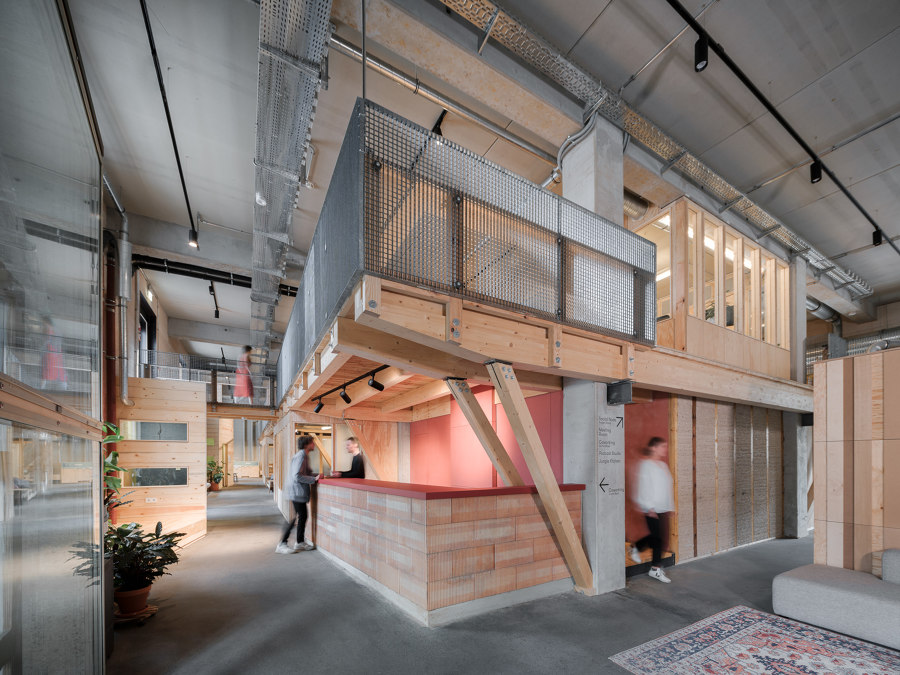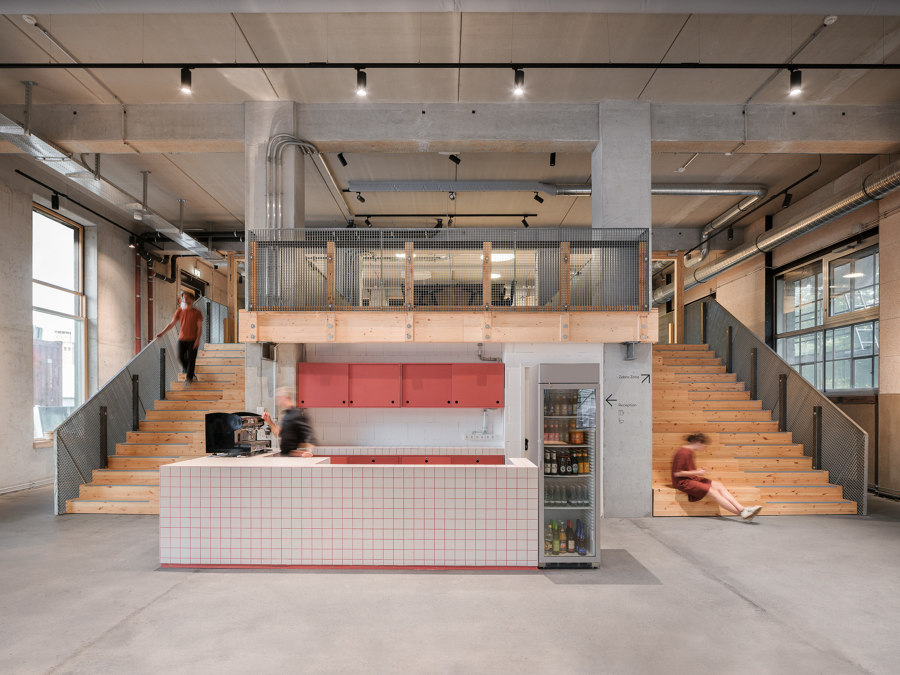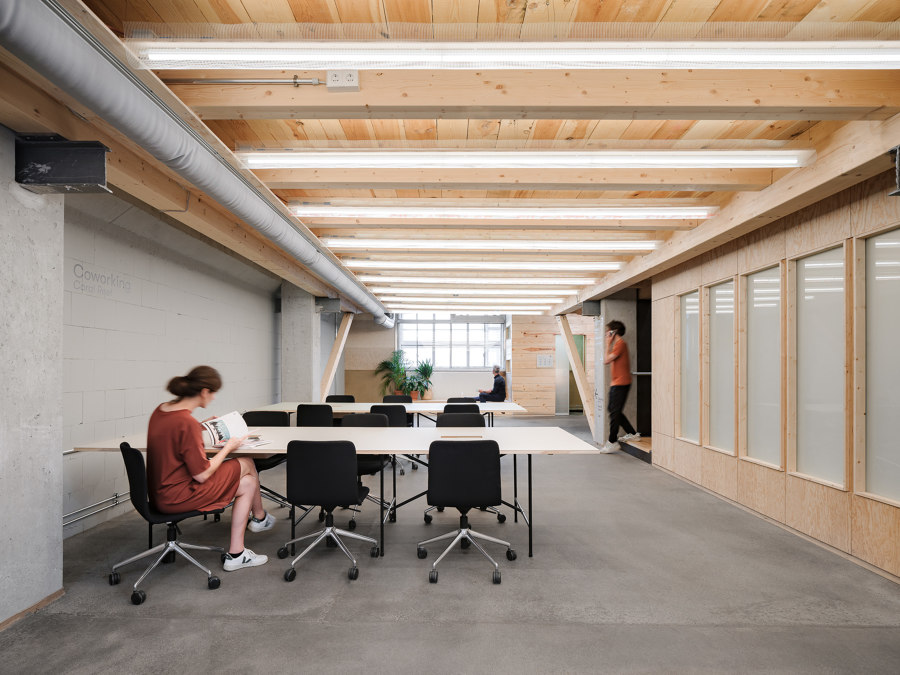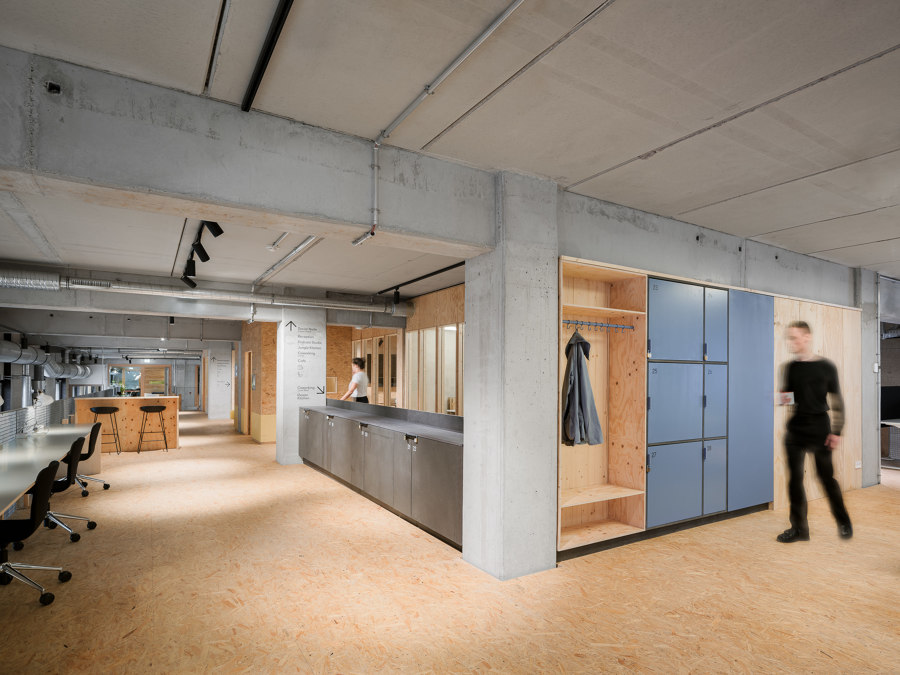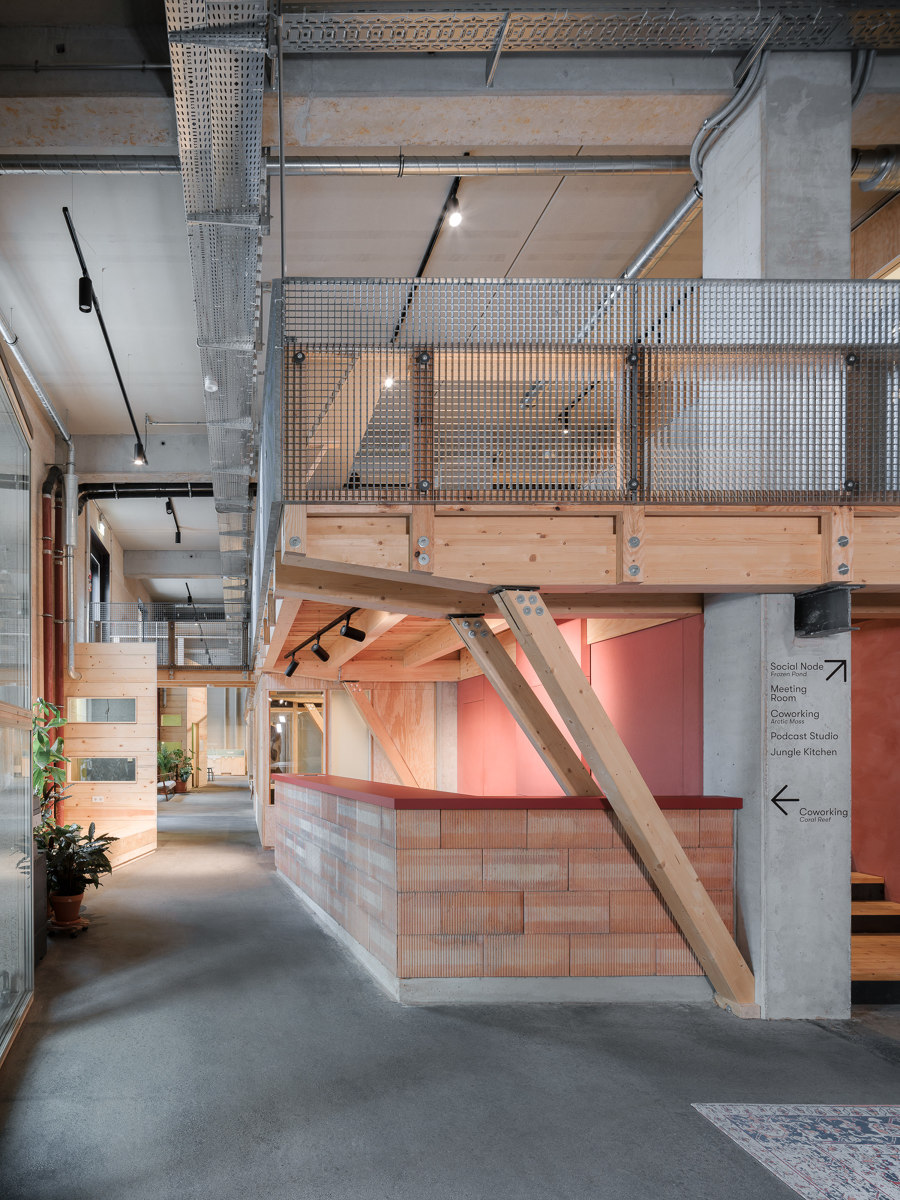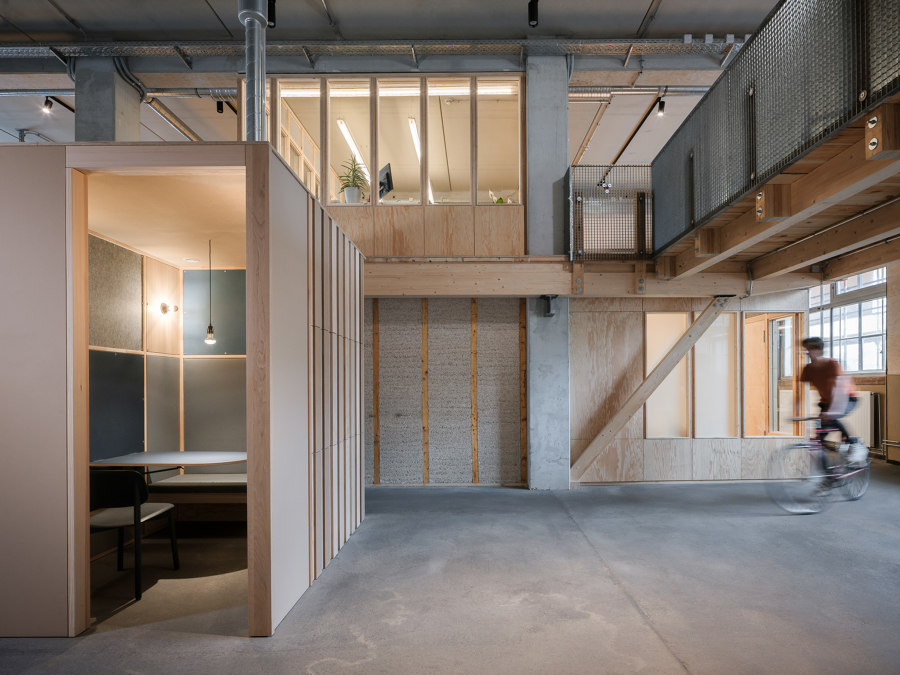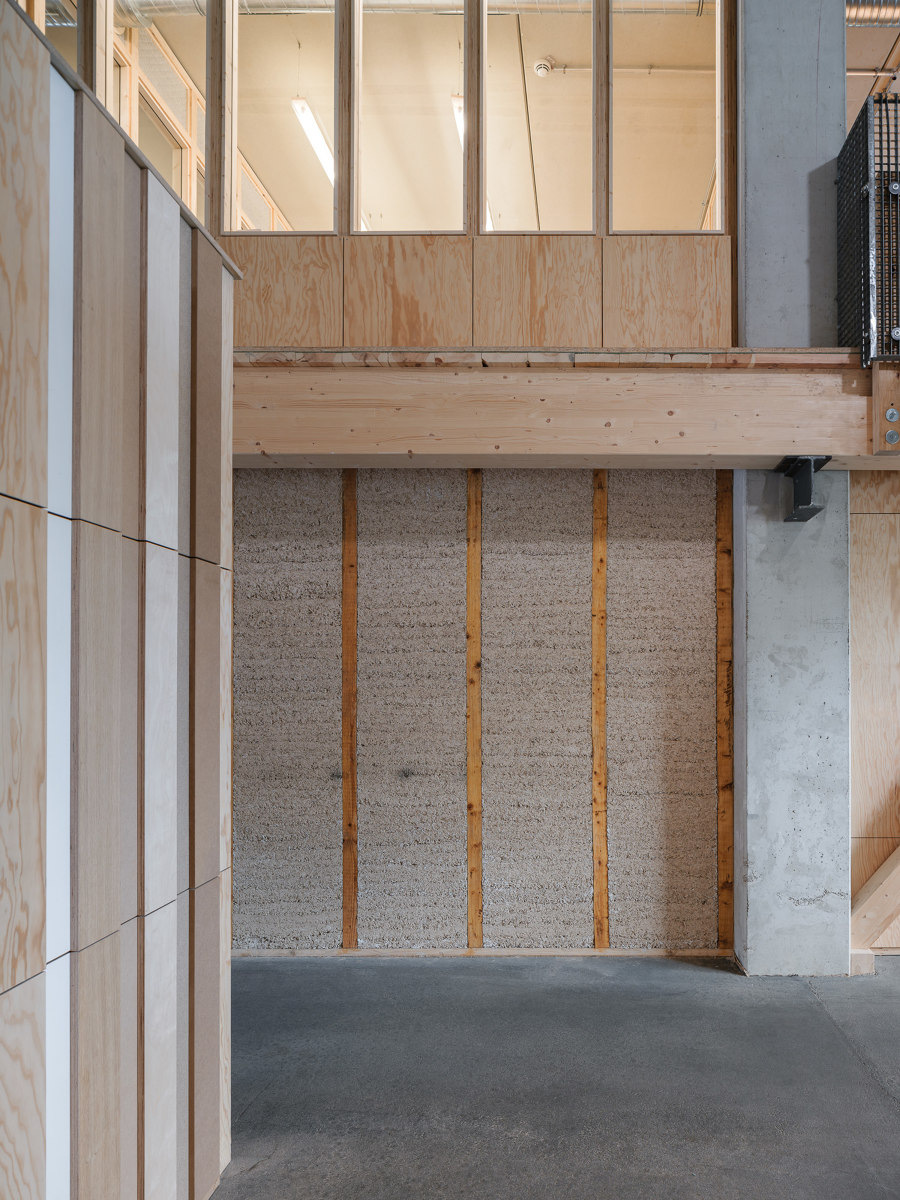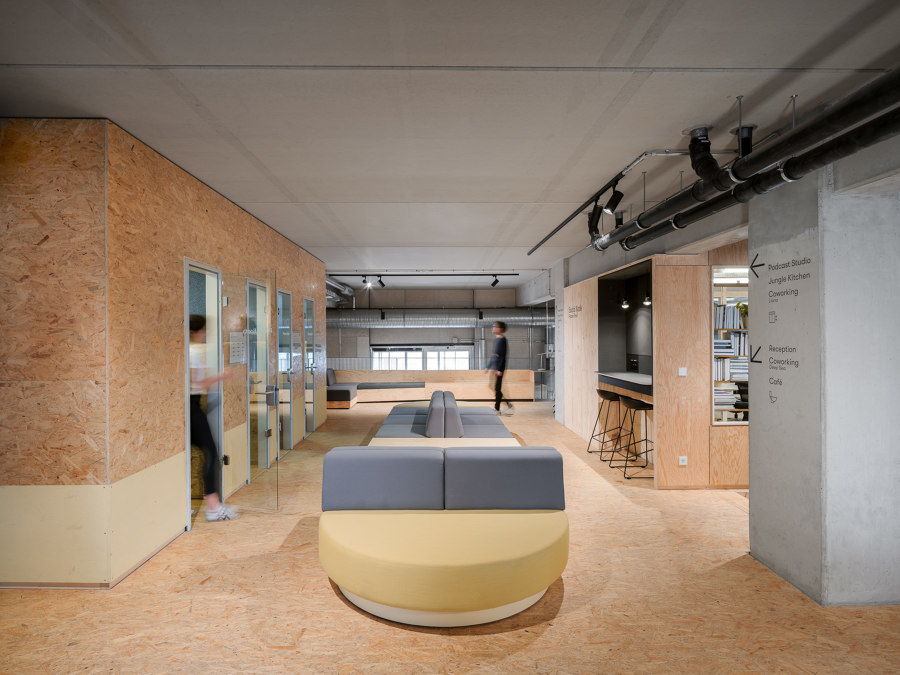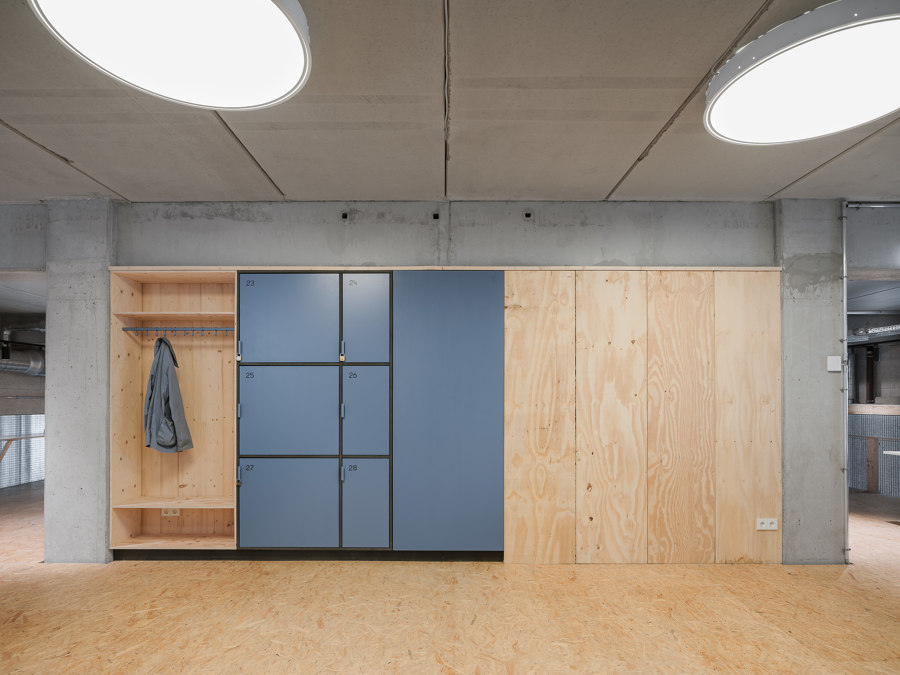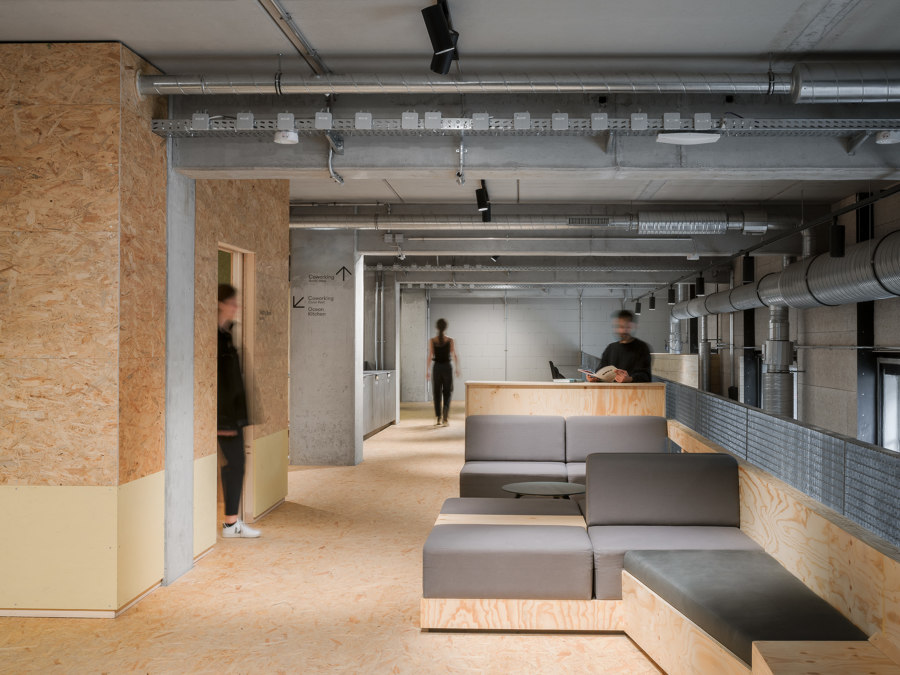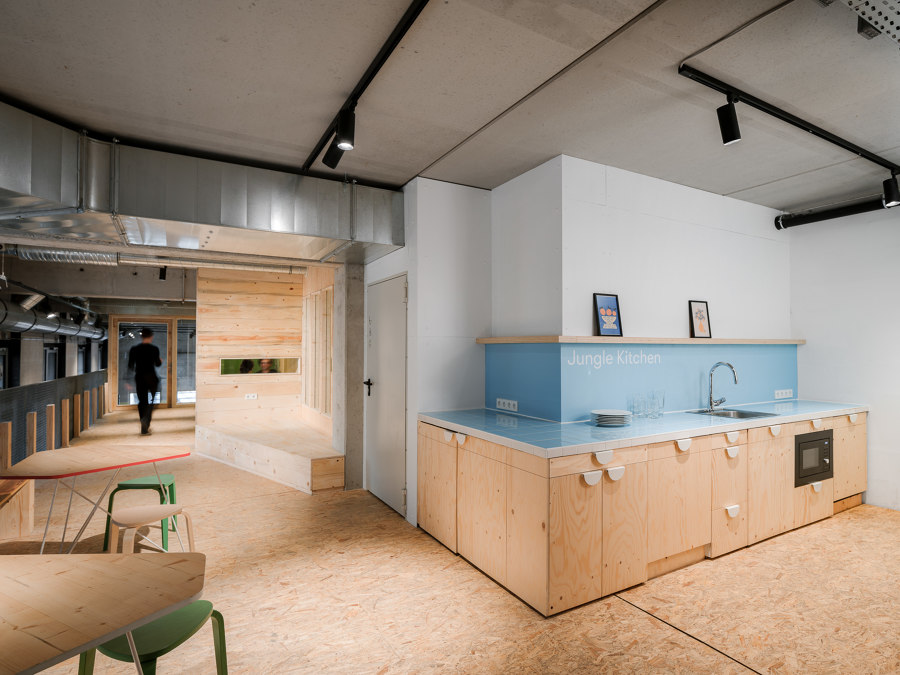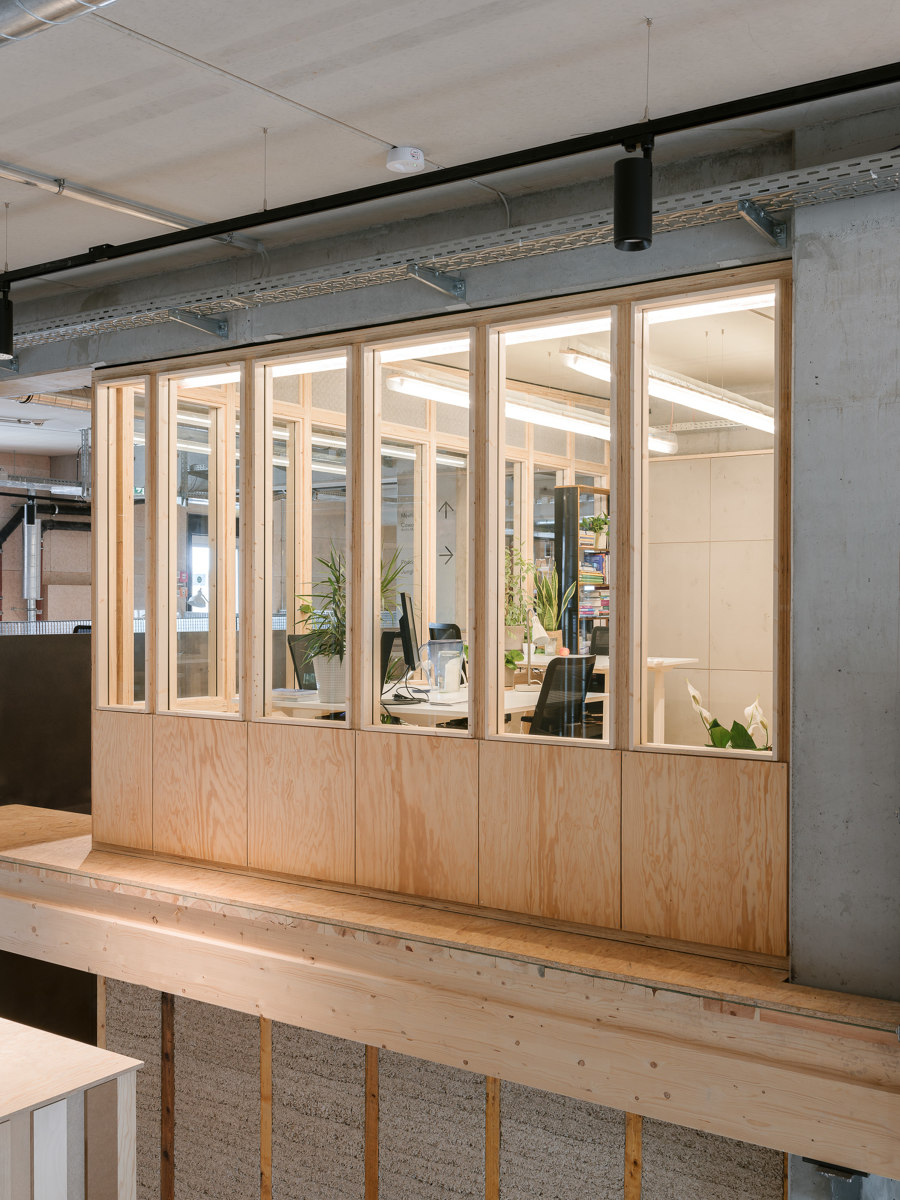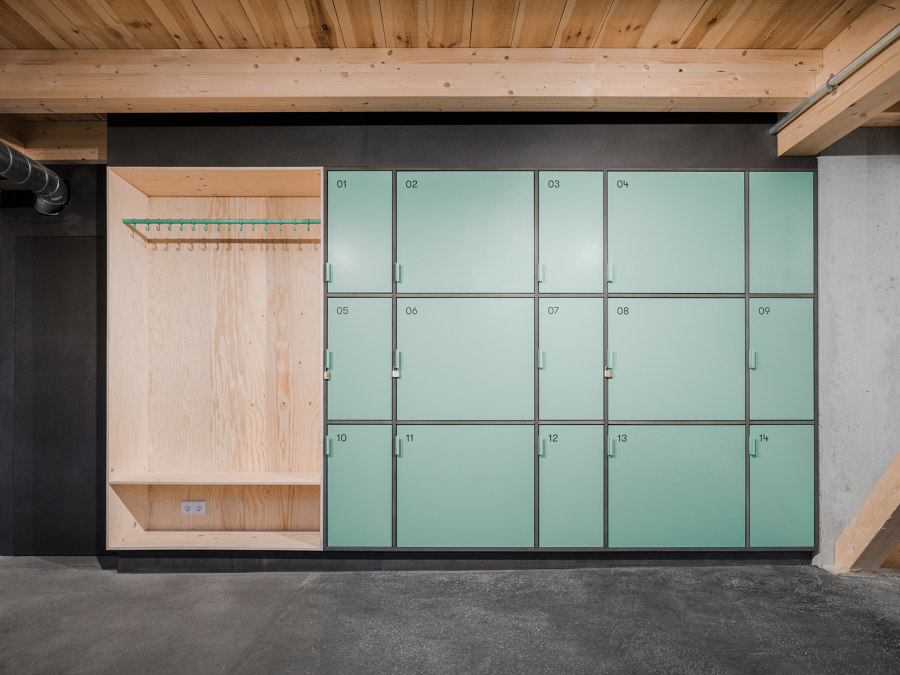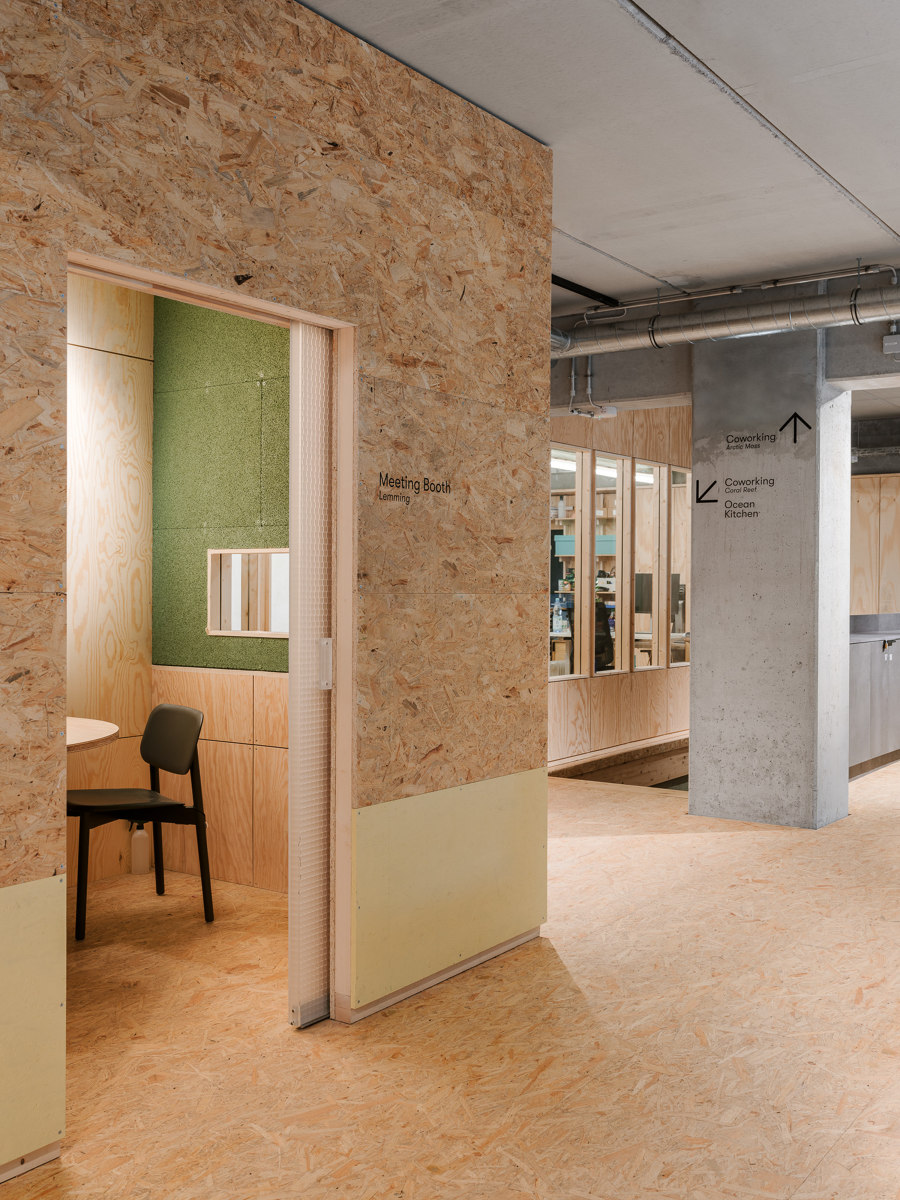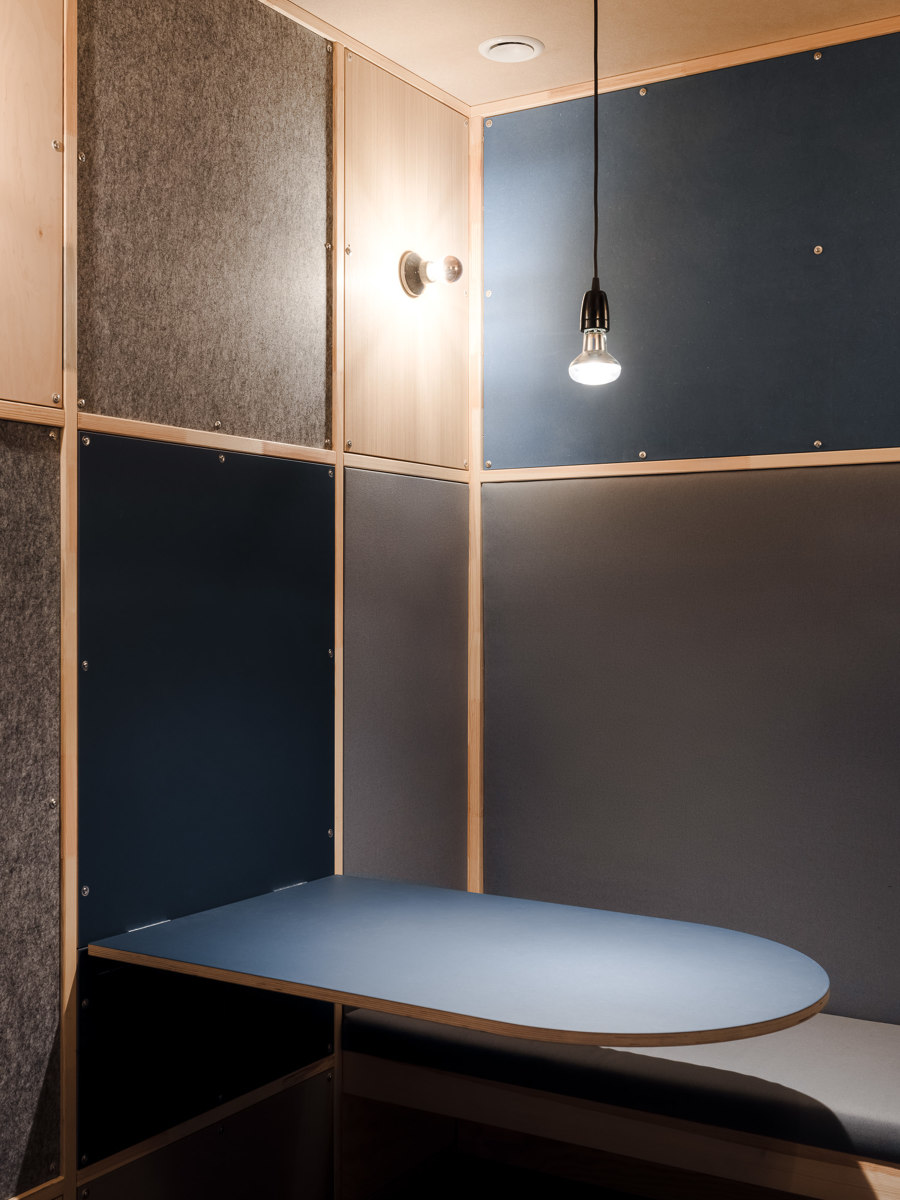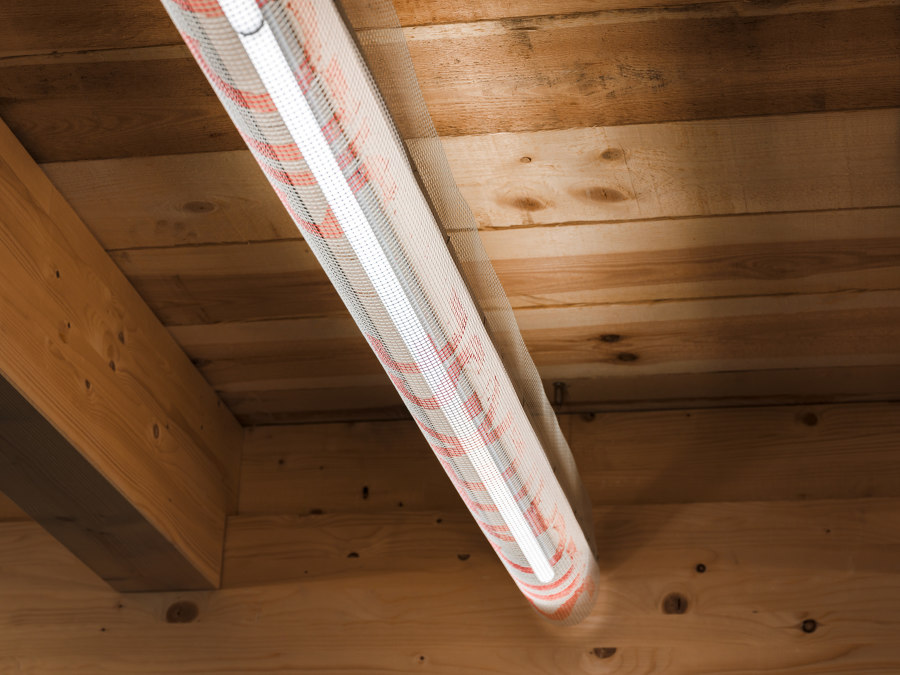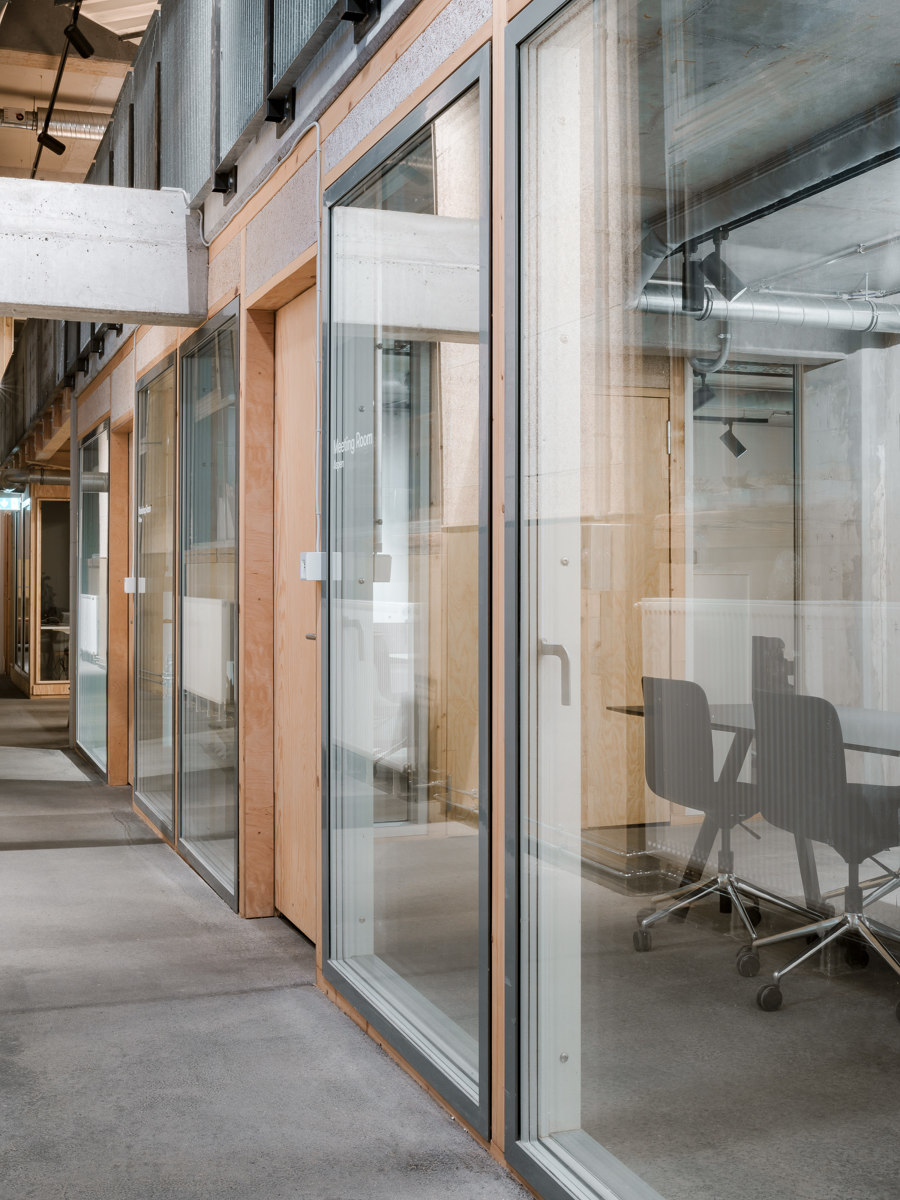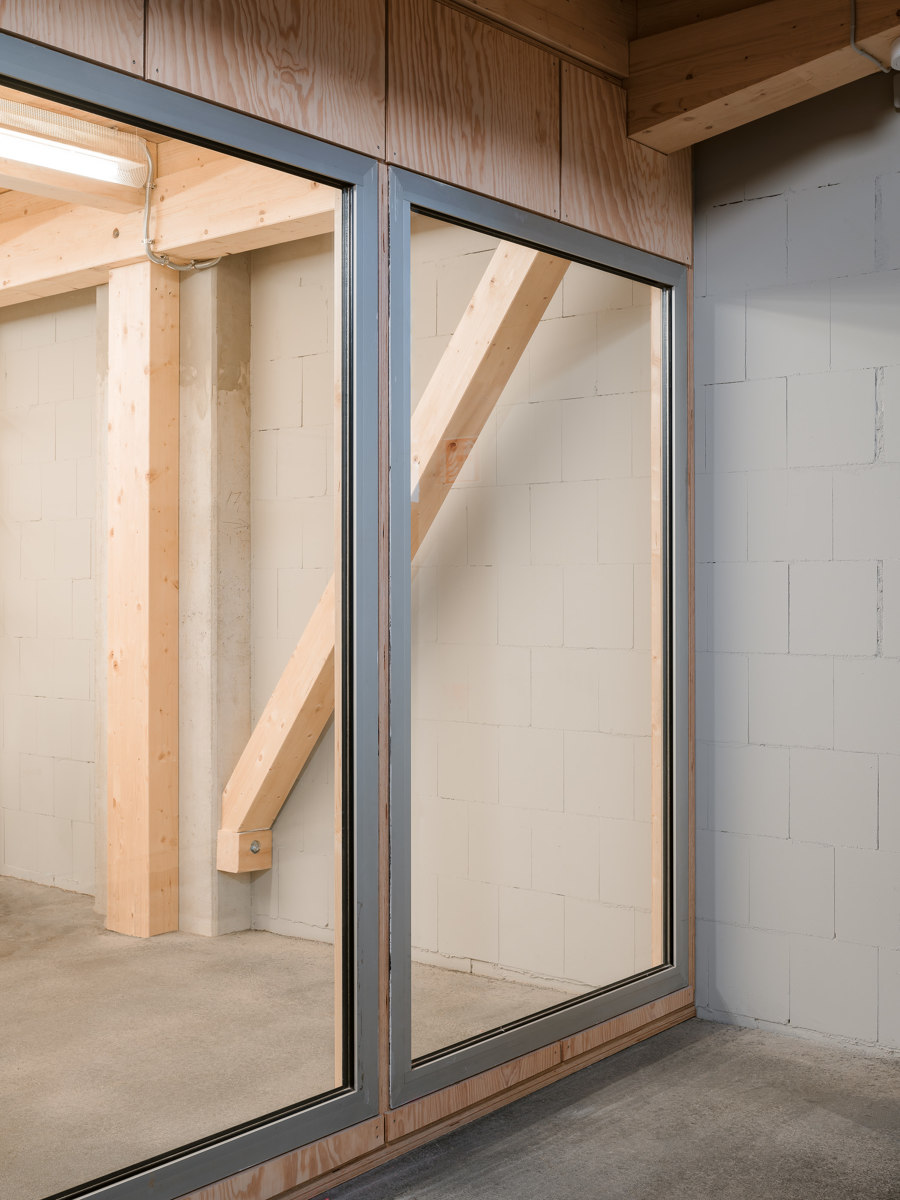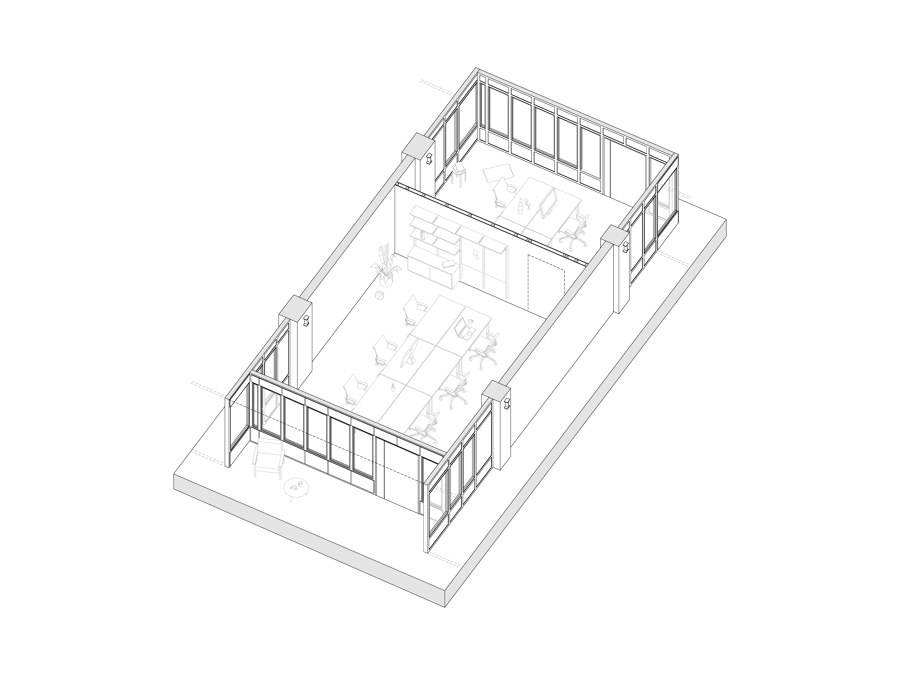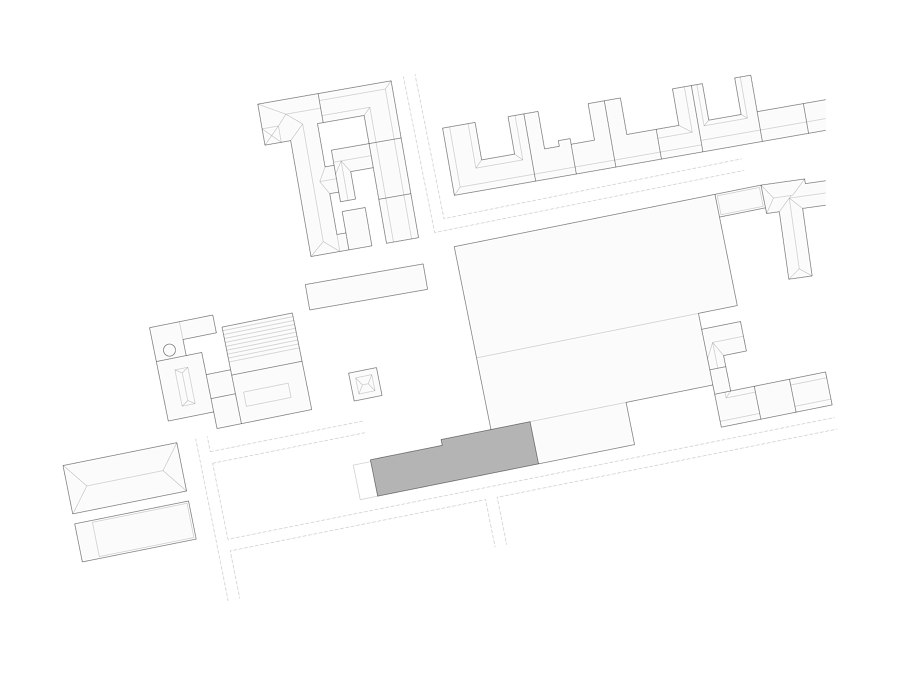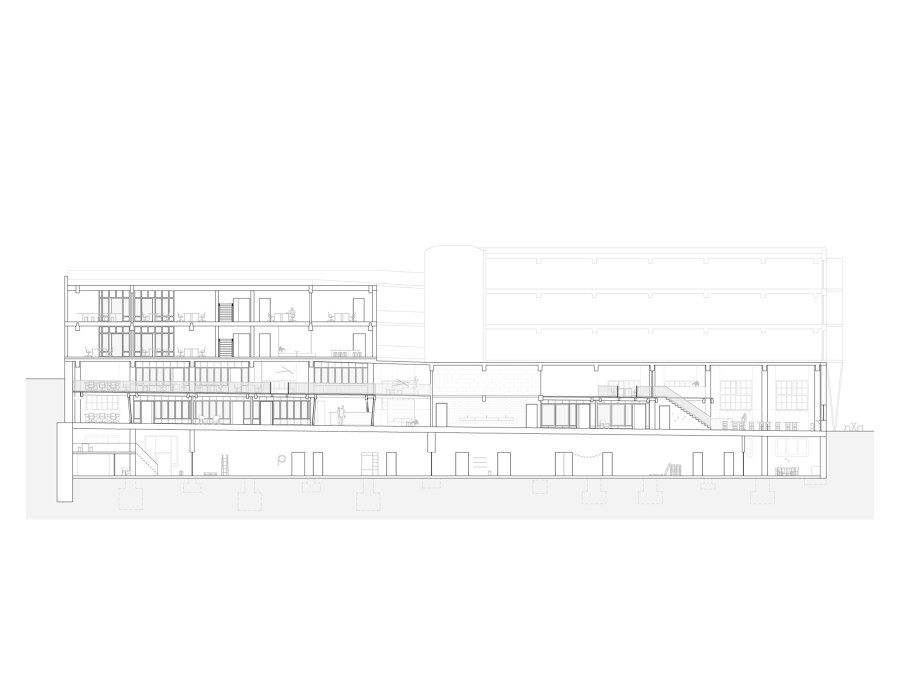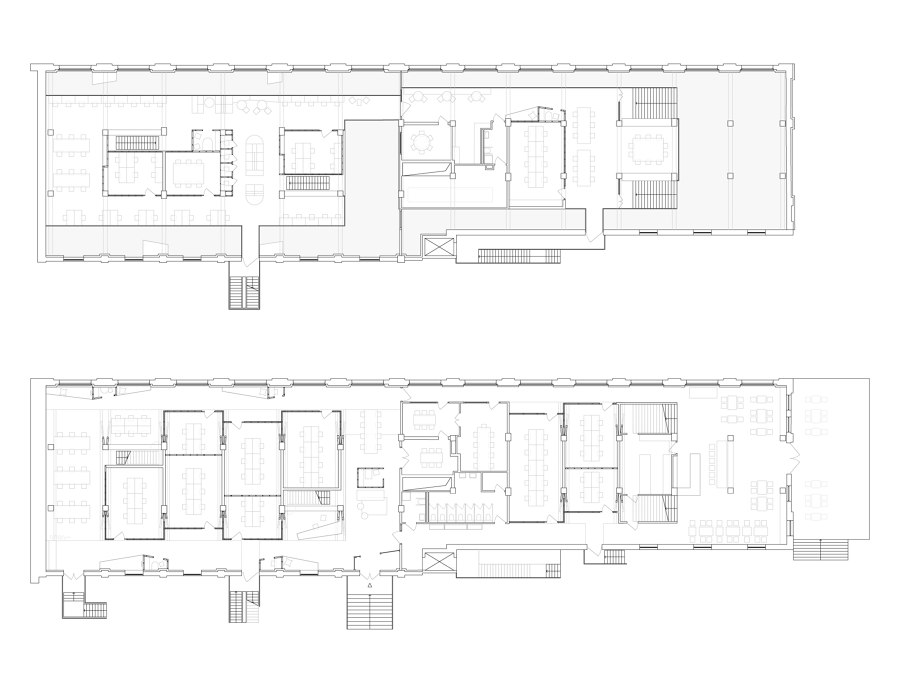The material concept of circular building operates in the range between "using something as it is" and "upcycling". In terms of aesthetics, LXSY Architekten consciously want to dispel preconceptions about second-hand design. Despite the use of diverse materials, there is a strong focus on a clear-cut, homogeneous and high-quality design.
With Impact Hub Berlin at CRCLR-House, a co-working space is opening for a new generation of entrepreneurs who focus on the circular economy, sustainable food, diversity & inclusion and green tech. In addition to the building's use, its construction is infused with an awareness of conserving resources. The interior design by LXSY Architekten reflects how the preservation of existing buildings and the use of sustainable, renewable and recycled materials can transform tomorrow's construction in a positive way.
Impact Hub Berlin at the Kindl-Areal
On the site of the former Kindl brewery in Berlin's Neukölln district, the collaborative community and co-working space Impact Hub Berlin is opening for a new generation of entrepreneurs who focus on circular economy, sustainable food, diversity & inclusion and green tech. For the development of the Kindl-Areal, aspects such as social compatibility, accessibility, diversity, environmental friendliness, resource conservation and waste avoidance play an essential role. Resource-saving construction also informs the interior design of Impact Hub Berlin at CRCLR-House by LXSY Architekten.
Circular building
Back in 2015, LXSY Architekten approached the interior design of Impact Hub Berlin in Kreuzberg in a participatory and sustainable way. Two years later their concept earned them the German Design Award. In an exploration of circular construction methods, the new location takes into account aspects such as reusing of building components, flexibility, recycling material, facilitating future usage changes and creating versatile structures. The necessary retrofitting of the former warehouse and its extension were carried out by TRNSFRM eG according to the design of Die Zusammenarbeiter. Recyclable materials, deconstructable and unmixed constructions and simple standards are used for the interior fittings. With the help of product and material passports, the elements used can be repurposed after disassembly. The process itself was accompanied by various workshops to explore sustainable construction methods and experimental approaches in prototyping.
Structure and use of space
The former warehouse is split into two levels by the installation of a wooden gallery. Adapted to the high level of the windows, emergency exits and the predetermined grid of the columns, accessible multifunctional rooms and team spaces are placed above and below the gallery level. Public areas on the ground floor, such as the café, are also made accessible to local residents. Other spaces are reserved for Impact Hub Berlin members. In a nod to the history of the site, the industrial character of the existing building can still be felt. Without the hall losing any of its spaciousness, the central rooms allow for indirect zoning. Adapted to the different needs, there are different room styles suited to either noisy or quiet working environments. The open spaces encourage dialogue with others, but also feature spaces to retreat to for concentrated work. The result is a varied mix of team areas, open co-working, meeting rooms, lounge and a café with a terrace. Telephone boxes, meeting booths and seating niches are distributed throughout the levels, while studios, workshop rooms and labs can be found in the basement.
Values-based design
The values of Impact Hub Berlin are incorporated into its design and are visible thanks to its transparency, openness and flexibility. The interplay of transparent, translucent and opaque walls characterises the design of interior spaces. Despite strong specifications such as the grid of the columns or the escape routes, the building’s use is as flexible as possible in terms of the versatility of the size of the rooms. Based on the colour concept of Impact Hub Berlin's corporate design, the zoning is emphasised by specific colours which facilitate recognition and orientation. All rooms offer a friendly, bright atmosphere that put visitors at ease.
Clear design
The material concept of Impact Hub Berlin at CRCLR-House involves both “using materials as they are found" and "upcycling". Around 70 percent of the materials and products used are recycled or sustainable. High-quality reused and new sustainable materials are used as they are. Damaged or uneven materials are treated to fit the design concept. The aesthetics of a circular building should deliberately dispel any prejudices around second-hand design or the notion of inferior materials. Despite the simplicity and the use of diverse materials, the design hinges on clarity, homogeneity and a high-quality aesthetic.
Reused, recycled and renewable materials
Materials and products used in the design originated from demolition sites, trade fairs, museums and company stockpiles. The sliding doors of the telephone boxes, for example, were taken from former Impact Hub Berlin. The black MDF comes from a Berlin club. Local carpentry workshops were regularly canvassed to recycle wood offcuts and leftover pieces. The wooden standing grid with its width of 62.5 cm makes it possible to use even small offcuts of wood. Much of the furniture from old Impact Hub Berlin was kept and complemented with a mix of vintage pieces or furniture rentals. Functional elements such as cables, sanitary installations, ventilation pipes and heaters were also second-hand. The use of a new materials, in the form of hemp walls for example, provides a healthy indoor climate as well as sound insulation. Felt and straw panels also serve to boost the acoustics.
Impact Hub Berlin at CRCLR-House shows how preserving existing structures and using sustainable, renewable and recycled materials can positively shape tomorrow’s buildings.
Design team:
LXSY ARCHITEKTEN
Partners:
TRNSFRM eG
Studio de Schutter
